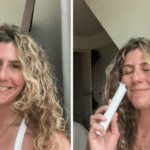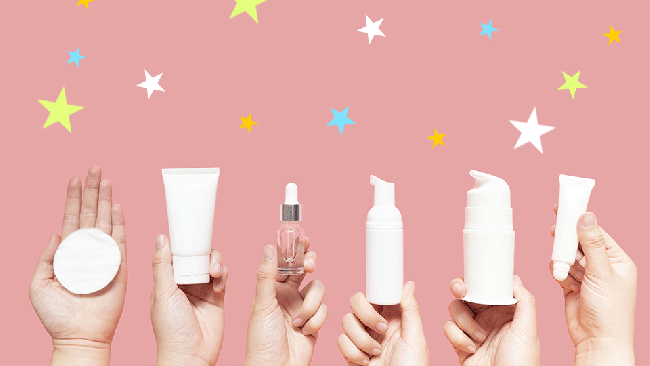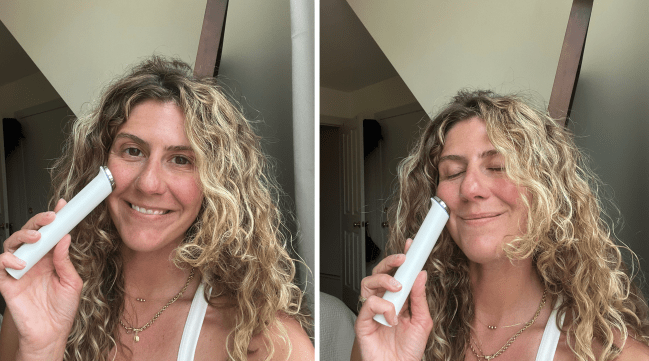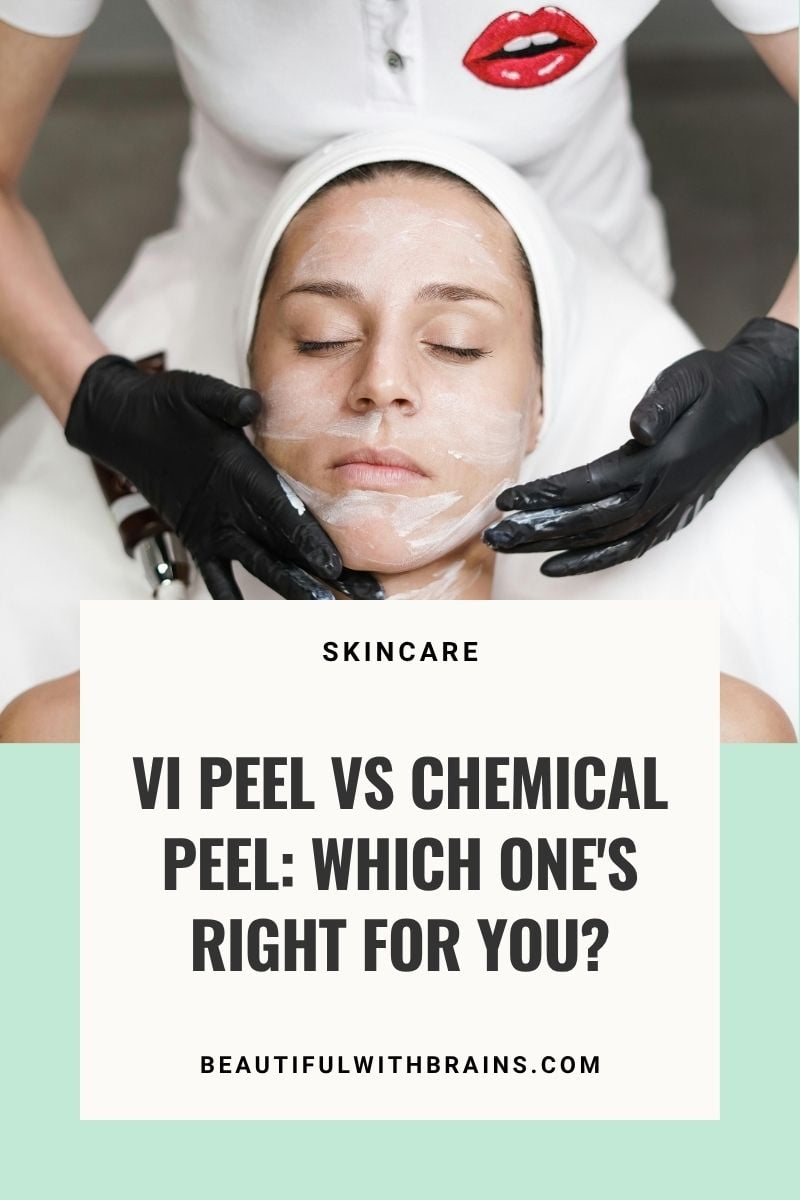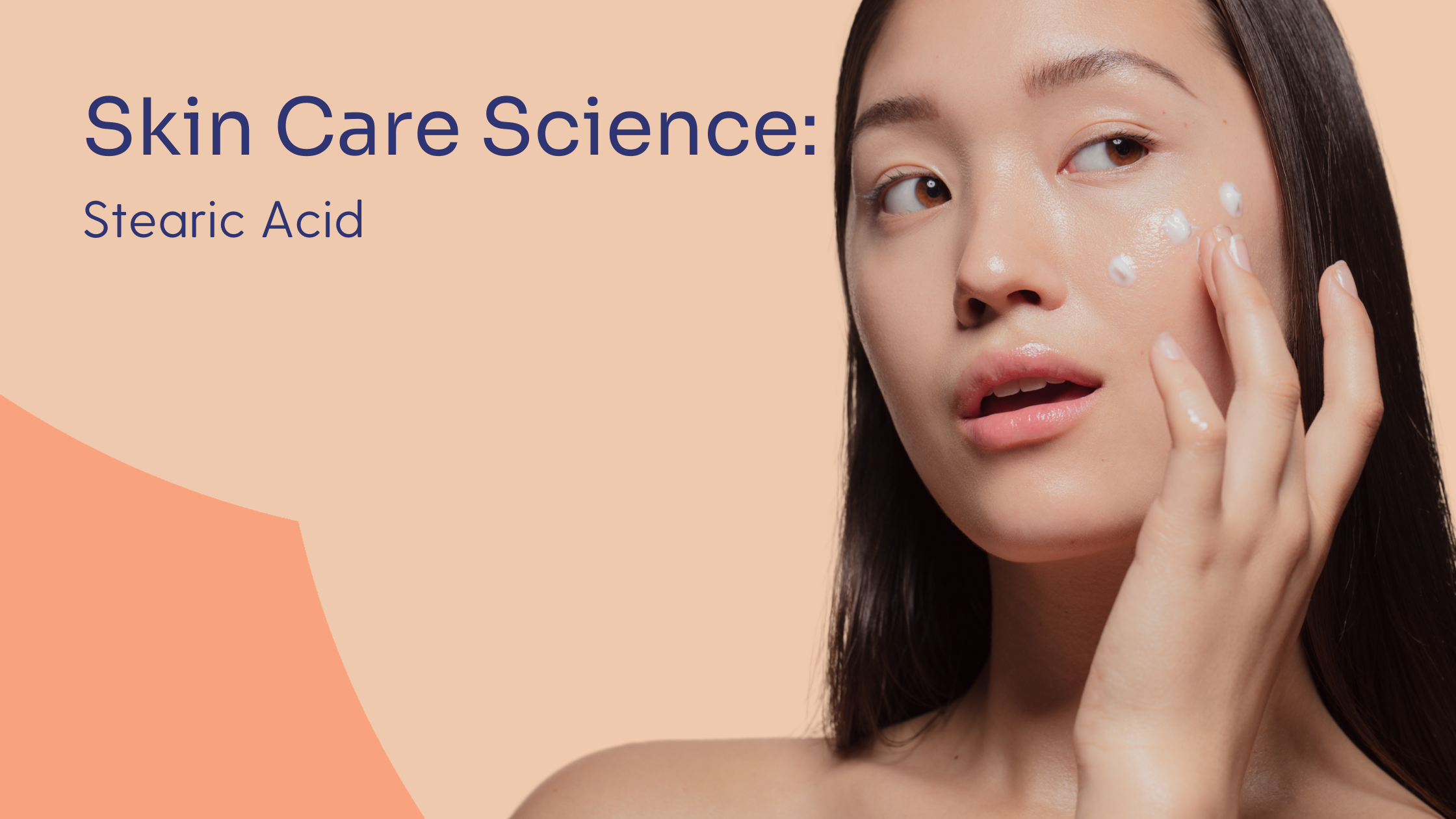All products and services featured are independently chosen by editors. However, StyleCaster may receive a commission on orders placed through its retail links, and the retailer may receive certain auditable data for accounting purposes.
Next time you’re in the company of a dermatologist, pose the ubiquitous desert island question, “If you had to pick one skincare ingredient that actually works, what would it be?” A lot of them would likely tell you retinoids. Retinoids are one of the most research-backed, tried-and-true actives that derms and estheticians swear by.
And while there are plenty of mild, over-the-counter retinol products on the market, if you’re wondering how to get tretinoin online, we’ve got the answers—especially if you were previously using Apostrophe for all your retinoid needs. If you recently lost access to tretinoin (or any other prescription skincare formulation) from the online pharmacy—it’s been shut down since March 7, 2025 after getting purchased by Hims & Hers—there are plenty of other viable options for securing a new refill.
The Best Places to Get Tretinoin Online at a Glance
- Best for Insurance: Nurx, $30
- Best for No Insurance: Hers, $29
- Best Free Trial: Curology, $40
- Best for Tretinoin Beginners: Musely, $35
- Best Bundle Deal: Wisp, $75+
- Best for New Customers: Ro, $43
Tretinoin (brand names include Retin-A, Retin-A Micro, and Renova) has an unparalleled history of proven efficacy and is backed by ample clinical research. Tretinoin first came about in the ’70s, and while it was originally formulated to treat acne, patients and dermatologists quickly noticed that the Rx formula offered a laundry list of off-label skin-enhancing “side effects,” including softening fine lines, reducing texture, fading spots from sun damage, and minimizing the look of enlarged pores.
“Retinoid” is the all-encompassing umbrella comprised of different types of chemical compounds derived from vitamin A, and each variation provides different strength levels, including retinol, retinaldehyde, and, of course, tretinoin, to name a select few. However, prescription-strength tretinoin typically delivers the quickest results, but it does require a prescription from a physician or dermatologist.
Whether you’re looking to bypass a costly trip to the dermatologist or don’t currently have health insurance that covers dermatology, there’s actually a slew of different online (and, yes, completely legal and legit) services that allow you to be assessed by a remote derm online to obtain a script for tretinoin and other prescription skincare products. Yes, you can buy Rx-skincare on second-hand websites, but for the love of god, please don’t resort to this “method” when you can get legit prescriptions from licensed healthcare providers.
Keep scrolling to discover how to get tretinoin online so you can try it for yourself, along with all of the answers to your tretinoin questions, from board-certified dermatologist Dr. Marisa Garshick of MDCS Dermatology, Arjun Dupati, MD, Board Certified Dermatologist & Mohs Surgeon at Apollo Dermatology, and Whitney Tolpinrud, MD, FAAD, and Medical Director at Curology.
FAQ
What is tretinoin?
Tretinoin is a vitamin A derivative and usually comes in the form of a topical cream, lotion, or gel that, of course, requires a prescription from a dermatologist, according to Dr. Garshick. It can be used for acne and visible signs of aging, including wrinkles, fine lines, and dark spots.
What are the benefits of using tretinoin?
“It’s used mainly to treat acne, sun-damaged skin, and fine wrinkles. By helping to regulate skin cell turnover, it helps to prevent clogged pores and breakouts. By helping to boost collagen production, tretinoin can help to improve the appearance of fine lines and wrinkles,” she explains.
Who should use tretinoin?
Dr. Garshick says that almost anyone can use tretinoin; however, those with super sensitive skin or rosacea should be careful. That’s because tretinoin has the potential to initially cause sensitivity and dryness. It’s certainly possible for folks with sensitive skin and rosacea to incorporate this ingredient into their skincare routine, just as long as they use it properly and gradually ease into regular application. Dr. Dupati notes that those who are pregnant or breastfeeding should avoid using tretinoin.
What are the potential side effects of tretinoin?
“While it is normal to experience some dryness, burning, stinging, or dryness when initiating tretinoin, it is best to speak with your doctor to determine the best management approach. While some of this may subside with continued use, it may be necessary to stop temporarily and resume when the skin is no longer irritated,” per Dr. Garshick.
Which skincare ingredients work well with tretinoin?
Dr. Garshick suggests pairing tretinoin with hyaluronic acid and ceramides to combat any dryness or irritation that you might experience with regular use of tretinoin. Hyaluronic acid hydrates, while ceramides support the skin barrier. Another candidate is niacinamide, since it’s anti-inflammatory and helps to soothe skin.
Which skincare ingredients don’t work well with tretinoin?
Our derm expert recommends steering clear of harsh soaps, abrasive scrubs, and active ingredients such as benzoyl peroxide or other exfoliating acids (they tend to dry out or irritate the skin), unless your derm says otherwise.
How long does it take tretinoin to work?
Dr. Dupati and Dr. Whitney are on the same page on how long it takes tretinoin to yield results. Dr. Duptai says you should notice improvements in your skin in four to six weeks, and Dr. Whitney says four to eight weeks. Both agree that the most significant results generally appear after around 12 weeks (three months) of consistent use. Dr. Whitney points out that these time ranges are more fitting for those who are applying retinol to keep acne at bay acne. “For concerns like fine lines and sun damage (photoaging), the benefits tend to emerge more gradually. You may need up to six months of continuous use to see the full effect,” she notes.
Is tretinoin safe to use long term?
Aside from pregnant and breastfeeding individuals, long-term use of tretinoin is actually ideal, according to Dr. Dupati. “It has been used in dermatology since the 1970s and has a well-established safety profile backed by decades of clinical experience,” Dr. Whitney explains. She adds that many patients can reap its benefits for years to come.
What are the different tretinoin strengths?
Topical tretinoin comes in three common strengths: 0.025% (low), 0.05% (medium), and 0.1% (high).
What tretinoin strength should you start with?
As with any potent skincare ingredient, you want to ease into it. There’s no need to rush incorporating tretinoin into your skincare routine, since it could potentially cause negative side effects. “I generally start by prescribing a patient tretinoin 0.025% cream first and ask them to apply a pea-sized amount to their entire face every night (excluding the skin surrounding the eyes). Every six months thereafter, I increase the strength, until the patient consistently uses tretinoin 0.1% cream every night,” Dr. Dupati advises.
Can you use tretinoin if you have sensitive skin?
Yes, folks with sensitive skin can most definitely hop on the tretinoin bandwagon, but you should consider how and when you apply it. Dr. Dupati says, “I have patients with sensitive skin start with tretinoin 0.025% cream every other night at first, as tolerated. If that’s still too harsh, I recommend my creation….’The Sandwich Method.’ The Sandwich Method essentially has the patient apply a layer of Vanicream lotion on the face, with tretinoin 0.025% cream on top, and lastly another layer of Vanicream lotion to top it all off.” Sandwiching tretinoin with layers of lotion helps minimize the drying effect tretinoin can have on some users. Dr. Dupati also emphasizes the need to use sunscreen during the day.
Alternatively, you can try a lower-strength formulation every two or three nights if every other night is still too much for your complexion to handle, per Dr. Whitney. She also recommends the”sandwich method” for those with sensitive skin. “Avoid applying tretinoin to sunburned, broken, or eczematous skin, and take steps to protect your skin from environmental stressors like sun, wind, and cold. Daily use of sunscreen is also essential,” she adds.
Now that we’ve answered commonly asked questions around tretinoin usage with the help of our derm experts, it’s time for the fun part: Picking where to order tretinoin online. We’ve included a range of services across varying pricepoints, so there should be something for everyone in this comprehensive list.
The 8 Best Places to Get Tretinoin Online
-
Nurx

Image Credit: Nurx. Another online healthcare service that offers RX meds and testing kits without an IRL appointment, Nurx also offers a huge range of prescription-only skincare products for “dermatology at your doorstep,” including Tretinoin, topical antibiotics, and spironolactone. Nurx also works with select insurance companies, but you can also pay out-of-pocket, too. Tretinoin costs as low as $30 a month ($90 for a three-month supply), which is nothing out of the ordinary for buying tretinoin online.
Average Cost: $30 per month for a three-month supply
Main ingredients: Tretinoin
Insurance accepted: Yes -
Hers

Image Credit: Hers. Not only does this online healthcare service allow you to get prescription medications and birth control online, but it also offers Rx-only skincare treatments for acne and anti-aging. The Acne Cream can contain up to 0.55% tretinoin (depending on how severe your concerns are during intake and what your derm recommends). On average, a jar will cost you $29 per month, not including additional fees Hers may require.
Average Cost: $29 per month
Main ingredients: Tretinoin, niacinamide, azelaic acid, and clindamycin
Insurance accepted: No but HSA/FSA funds are accepted -
Curology

Image Credit: Curology. You likely already know Curology for its personalized skincare products, but did you know that Curology’s HydroTretRx is formulated specifically for sensitive skin? “Tretinoin is compounded with ingredients like dexpanthenol (proVitamin B5) to attract and hold moisture for softer, smoother skin. Dexpanthenol also helps skin heal and soothes irritation. HydroTretRx is designed to help you get the benefits of tretinoin while supporting your skin barrier. This product can be ideal for those with sensitive skin looking for tretinoin,” Dr. Whitney explains.
The best part about Curology is that you get free online access to a dermatology provider, and if you’re not satisfied with the results, your provider can adjust your formula. Plus, you can try out the service for free for 30 days.
Average Cost: $40 per month
Main ingredients: Ingredients are subject to consultation
Insurance accepted: No -
Ro

Image Credit: Ro. Sometimes starting a new skincare prescription can be daunting, but not with Ro. This telehealth site gives you a provider that will check in with you about your progress, help you manage side effects, and tweak your treatment as needed. Complete a free, 10-minute online visit to get a custom Rx treatment that targets your skin concerns. Follow that with free, unlimited check-ins with your provider.
Considering a lot of similar companies charge for each visit, Ro is definitely a great option for those on a budget, especially since you can save 25% on your first order, if prescribed. That brings the price down to $43 for your first two months (after this period is up, you’ll get billed $58 every two months).
Average Cost: $43 for two months
Main ingredients: May contain tretinoin, niacinamide, tranexamic acid, hyaluronic acid, ceramides, and azelaic acid
Insurance accepted: No -
Musely

Image Credit: Musely. Prescription skincare products prescribed by the best dermatologists and pharmacists? Count us in! Almost all of Musely‘s formulas contain tretinoin—whether it be an anti-aging cream or an eye serum. It’s easy to see why the telemedicine platform incorporates this ingredient in several of its offerings. Tretinoin accelerates the skin cell turnover process, making it great for those dealing with acne, visible signs of aging, and more.
In addition to tretinoin, the Anti-Aging Night Cream calls on niacinamide and hyaluronic acid to smooth skin and lock in moisture. You can even get this formula in Gentle, Balanced, and Veteran iterations. Each one has a different concentration of tretinoin, so you can really figure out how much works for your skin. The anti-aging cream starts at $35 per month.
Average Cost: $34 per month
Main ingredients: Tretinoin, niacinamide, and hyaluronic acid
Insurance accepted: No, but HSA/FSA funds are accepted -
Wisp

Image Credit: Wisp. Wisp Wrinkle Firming Cream
Wisp is a sexual and reproductive telehealth provider that recently branched out into skincare. Prescription-strength skincare without having to walk into a doctor’s office? Count us in! Wisp provides easy access to dermatologists to make sure your skin concerns like acne, hyperpigmentation, and visible signs of aging are taken care of.
One of its offerings, the Wrinkle Firming Cream, contains tretinoin (0.04%), azelaic acid (5%), and niacinamide (4%). Together, these powerful ingredients tackle fine lines and wrinkles, dark spots and acne. Just be sure to apply the product before bedtime only and then follow it up with an SPF 30 sunscreen the morning after. Get a three-month supply for $90 (paid once) or opt into a three-month subscription for $75 per quarter (with automatic refills).
Average Cost: From $75
Main ingredients: Tretinoin, niacinamide, and azelaic acid
Insurance accepted: No, but HSA/FSA funds are accepted -
RedBox RX

Image Credit: RedBox RX. For an online tretinoin option that’s as low as $20 a month, head to RedBox RX. The platform offers affordable telehealth and online prescriptions and has provided over one million consultations thus far. Simply fill out a quick assessment (costs $25), and a U.S. licensed medical provider will share their treatment recommendation options. After you choose the one you want, the formula will get shipped to your door for free. This total for a tretinoin treatment is $85 for a three-month supply ($25 for an online consultation + $60 for a three-month supply).
Average Cost: $20 per month ($60 billed every three months)
Main ingredients: Tretinoin
Insurance accepted: No -
Agency

Image Credit: Agency. This online dermatology service gives you the full experience of an in-office appointment without the commute or costly co-pays. Agency allows you to get a comprehensive skin evaluation with a licensed healthcare provider (you upload a series of images), and your provider will suggest a customized formula tailored to suit your individual skincare needs and goals. For reference, the anti-aging Future Formula will ring you up for $40 a month ($80 for two months), while the Dark Spot Formula rings you up for $35 a month (though you can save $10 per month when you’re subscribed to both products, which comes out to $130 for two months for both formulas).
Average Cost: From $40
Main ingredients: Ingredients are subject to consultation
Insurance accepted: No, but HSA/FSA funds are accepted

